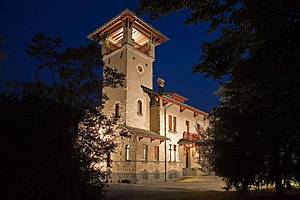Thermae Diocletiani, A Monumental Testament to Ancient Rome
Piazza della Repubblica, 00185 Roma RM, Italy
4.1
Introduction
The Thermae Diocletiani is one of the most famous public baths in ancient Rome, as well as the largest one. It covers an area of 12 hectares, with a central hall measuring 280 meters long and 160 meters wide, built according to the design of the Basilica of Constantine. Built in 298 AD, it took several years to construct until it was completed in 306 AD. It was built to provide bathing services for residents living in the areas of Viminal Hill, Quirinal Hill, and Esquiline Hill at that time. The water source used in the bath was from the Marcia Aqueduct, which was advocated from the 2nd century. After the bath was built, in order to ensure the city's water supply, Diocletian ordered the construction of a new aqueduct. In addition, the bath may have also used the water source of the Antoniniana Aqueduct, which originally supplied the Caracalla Baths. Now, the archaeological site of the bath is located in the north of Republic Square, facing the central fountain of the Square of the Water Nymph, and it is well known for its relatively complete structure and magnificent architecture. Address Piazza della Repubblica, 00185 Roma RM, Italy
Opening hours Tuesday to Sunday: 09:00-19:45
Transportation Take public buses 16 or 492 and get off at the Volturno-Cernaia stop.
 This may be one of the most unique constructed churches
This may be one of the most unique constructed churches











































